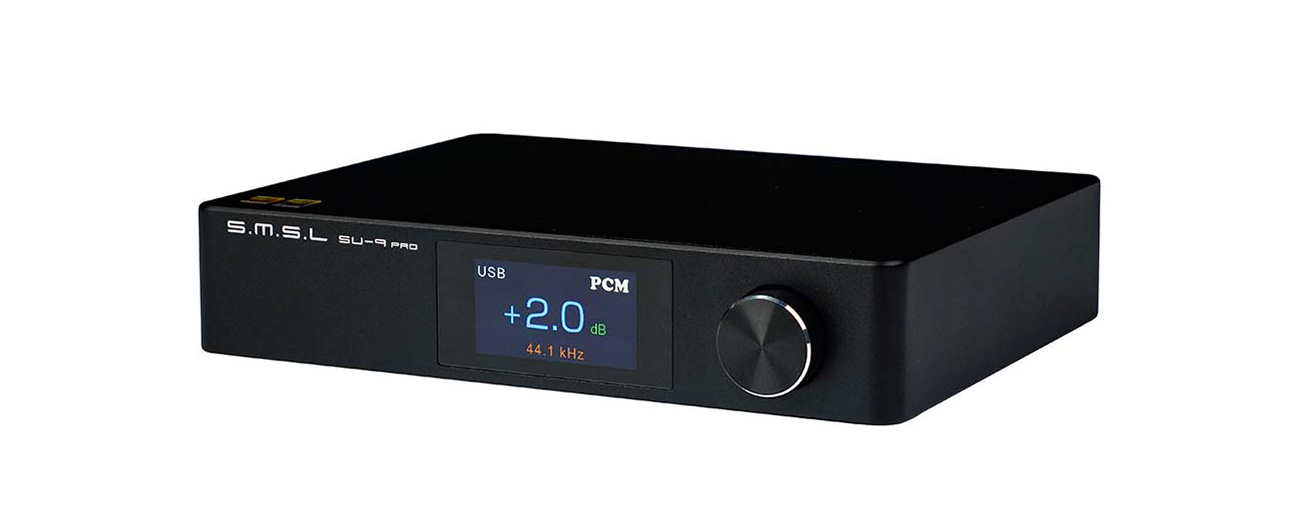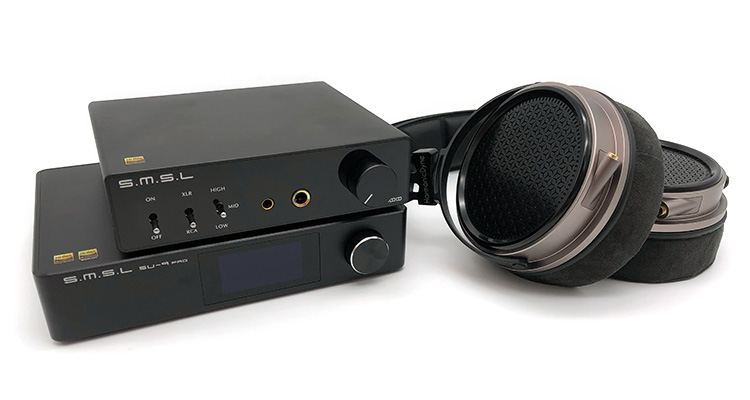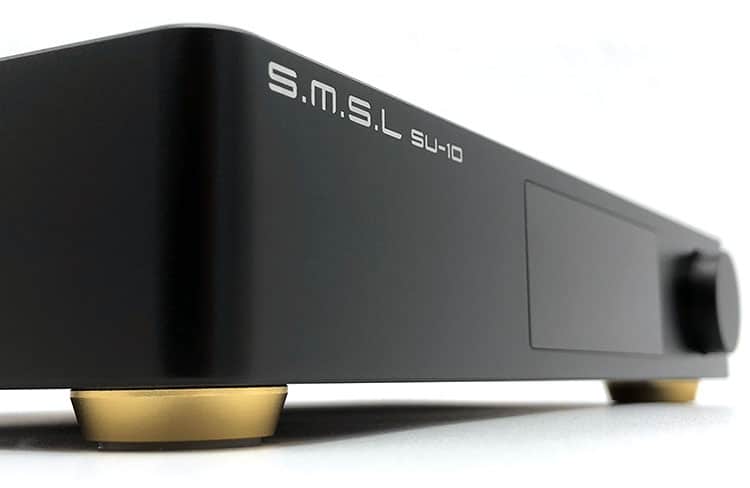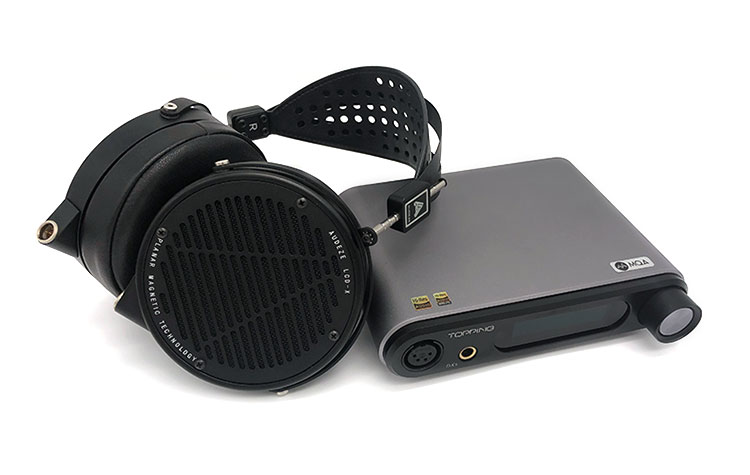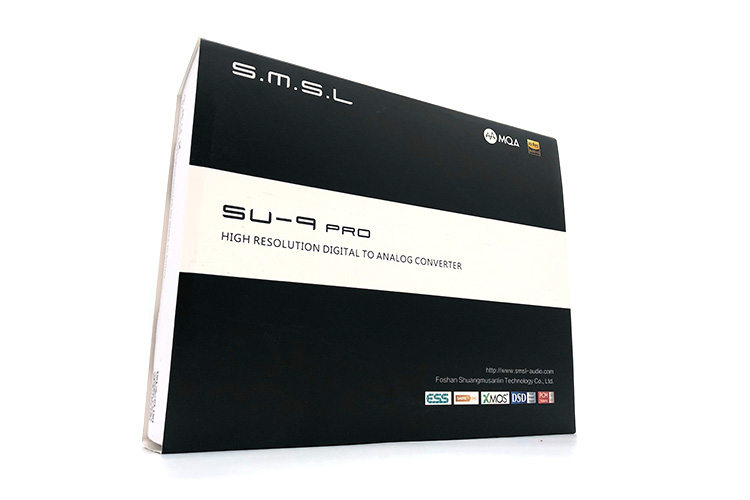Synergy
For the SU-9 Pro, I took out the Burson Conductor 3 Reference from my rig while also checking in with the only SMSL amp I have in the form of the HO100 for some additional insight.
I wasn’t hoping for the HO100 to match the effort of the much costlier Burson Conductor 3 Reference but I had to sort out a substitute for the original SH-9 headphone amplifier SMSL released with the SU-9 years ago.
A few takeaways I have with the HO100 are that it is less gentle with image placement and has a smaller spread with grander scenes that the C3R had no trouble sifting through for a more detailed impression. Bass is also more rounded on the cheaper amplifier with the bass lines coming through enough but with less finesse and room information.
With headphones, the Audio-Technica ATH-ADX5000 enjoyed the tonal balance of the SU-9 Pro if only lacking a bit in treble extension and overall dynamics. The Sennheiser HD600 is at least showing impressive feedback with electric guitars.
Bringing in some hint of added emotiveness working harmoniously with the HD600 for violins and kick drums, the SU-9 Pro pairing sounded enchanting and not too intimate. It does however weaken the clarity and imaging between instruments I got with the ATH-ADX5000.
For even less critical listening, the HarmonicDyne G200 burrowed deep into the more playful aspect of the SU-9 Pro and only lightly on the work part.
The least open-sounding pair of the bunch, the darker vocal region of the HarmonicDyne G200 holds back some of the nuances of the SU-9 Pro. It is on the other hand still an impactful performer on the low-end section as it also thickens and calms down the treble.
Select Comparisons
SMSL SU-10
$899.99
Technical
As if to remind the SU-9 Pro of its place in the hierarchy even though it has the more modern ES9039MPRO chip to decode, the SU-10 has doubled on the ES9038PRO chip it is using for a total of sixteen channels at its disposal.
And it doesn’t let the SU-9 Pro get ahead with a similar XU-316 USB module that allows for similar flexibility in playback controls. Plus, the SU-10 can be appreciated when the additional I2S and AES inputs come in handy since both are missing on the lower-end device.
The SU-9 Pro also only has a low-noise power supply while the SU-10 is more advanced with two separate sets of linear power supplies for the digital and analog sections.
Design
With a familial semblance, shut your eyes a bit and you might mistake the SU-10 for the SU-9 Pro. From the curved corners, flat top, and full-color display, the SU-10 is in a lot of ways a close derivative of the earlier SU-9 line.
But once you put the two side by side, the SU-10 reveals its class considering that the SU-9 Pro has small rubberized feet that squat the unit low to the desk while the golden accents on the SU-10 both add height and authority to the bigger chassis.
The two units also differ in the volume wheel where the SU-9 Pro has a silver chamfering against the plain black knob on the SU-10. At least both are easy to use but I notice that the one on the SU-9 Pro is prouder for those with large fingers.
Performance
Remember when I mentioned that the SU-9 Pro could be a cheap replacement for the SU-10 in the beginning? Sure, that’s possible but it’s also not the whole picture still.
Both fresh releases, the SU-10 has the bigger task of proving itself worthy simply by being positioned directly above the SU-9 Pro in terms of product line and at almost double the price.
Beginning with some pop and electric music, the SU-9 Pro already showed that is not as extended with kick drums. Look out as well for cleaner basslines with the SU-10 allowing a stronger punch and depth to be infused with the mix.
For some reason, SMSL decided to make the SU-10 a hair brighter. Continue reading nonetheless, even if you’re treble sensitive since I still find the SU-10 more flowing and less intense with females adding some weight to instruments like strings.
Both are airy and expansive DACs but I have to give it to the SU-10 for the increase in finesse which could be probably attributed to its better extension on either end. Details as well may not be twice the improvement but splurging on the SU-10 will give a slightly more resolving and technical performer beginning with the handling of dynamic scenes where the SU-9 Pro struggles a bit more.
SMSL DO100
$239
Technical
Even the more modest chassis of the DO100 is hiding a few tricks of its own against the SU-9 Pro. Churning out analog signals for the cheaper unit is the dual ES9038Q2M setup from ESS which may not be the latest like in the SU-9 Pro but is a popular choice even for more expensive DACs.
Both devices can play the same PCM and DSD files, but only the SU-9 Pro will let users listen to MQA files. Also, the USB chip used isn’t exactly mentioned however it could be deduced that the second-generation XMOS module SMSL is talking about is not the XU-316 installed in the SU-9 Pro.
Four dual OPA1612 op-amps are arranged in the analog section of the DO100. It has a decent THD+N of 0.00008%, which is slightly higher than the 0.00005% listed on the spec sheet of the SU-9 Pro.
Design
Even with the full tempered glass panel flanking the whole front of the DO100, it doesn’t share the same confidence the SU-9 Pro exudes as the more classic yet full-featured looking device. This is because aside from the cheaper quality volume wheel, once you turn on the DO100 the seven-segment display will look passe.
If you like a unified look, then the DO100 is cut from a solid block of aluminum visually wrapping around the face. The SU-9 Pro on the other hand is precisely pieced together but has a noticeable outline on top exposing it was manufactured separately from the main body.
Performance
To answer those who will be asking if the SU-9 Pro is worth it when a DAC doing everything it can do is available at half the cost, I pitted it against the DO100 which is also from SMSL. And while I want to see the SU-9 Pro leave the cheaper DAC in the dust, the DO100 does have some say in certain areas.
Unlucky for the DO100 however, its low-end isn’t the area where it shined, beginning from the less room information and detail I’m getting to the lighter punch it is displaying. And due to its sub-bass rolling off faster than the SU-9 Pro, the rumble on the DO100 dies quicker reducing the presence of a beat.
Reverb on both devices gets a similar showing with stringed instruments letting out a clean and metallic twang. The DO100 ends up being the thinner and shoutier of the two as it arrives a bit less organically as a whole pushing female vocal more forward.
Since the more tepid coloration of the DO100 continues with other instruments such as horns and violins, the SU-9 Pro would be the better option for those looking to get a weightier sound. The SU-9 Pro is simply the more mature of the two losing some of the treble energy of the DO100 while still sounding similarly big and energetic.
Staging on the SU-9 Pro outperforms the DO100 when it comes to placing distant objects more accurately. Combine this with the less height the DO100 is giving, it makes it less convincing when listening to complex mixes.
Topping DX5
$449
Technical
The ES9039MPRO of the SU-9 Pro boasts eight individual channels but the dual ES9068AS DAC chip the DX5 is using is playing catch up as it has two channels each for a total of four. Pausing the numbers game for a minute, users will find that the DX5 can also decode MQA, PCM, and DSD at the same level as the SU-9 Pro.
With a built-in headphone amplifier, the DX5 separates itself a bit with its dedicated NFCA amplifier module pushing 1.8W per channel toward the front. But having two ESS chips inside, it can also output balanced through the rear XLR outputs like the SU-9 Pro.
Design
Since the SU-9 Pro simply upgrades the performance of the two previous generations with only a few minor updates physically, then the DX5 as an all-new design from Topping just last year is easily the more exciting one.
With two design awards, the DX5 is made with a two-tone rounded chassis that puts the face slightly proud of the rest. To make a case for the SU-9 Pro looking barer at first glance, it has a full-color display as its main design element.
The display is a huge part of what makes the SU-9 Pro appealing. Compared to the more old-school display of the DX5, the SU-9 Pro looks sleeker and less cluttered since it also lacks the two headphone sockets busying the face of the DX5.
Performance
A lot can be said between the Topping all-in-one and the SU-9 Pro DAC of SMSL seeing they’re quite far apart from one another not just with their brand but also in disposition. The price difference also shows taking into account that the DX5 had to squeeze in an amplifier making it more difficult to outclass the SU-9 Pro.
One of the earliest differences I noticed is the less enduring rumble on the DX5 that settles for honesty and dryness in the arrangement. This puts the SU-9 Pro in an early lead as I get from its richer beats the same enjoyment out of eating a slow-cooked meal imbued with multi-layered flavors whereas the DX5 settles on being safe and clean.
If you want a more uplifting type of vocal staging, then the DX5 will give this region a more sparkling and hard-hitting perception. Here, SMSL went in a different direction as I am getting a more resonant and less strict tuning that is also more full-bodied.
Finally, instead of filling the room like the DX5, the SU-9 Pro with busy rock songs distances instruments a little bit more bringing out enhancements in microdetails around the edges. The DX5 has the same lateral staging width as the SU-9 Pro but placement is less even as it places vocals more intimately and kick drums more compact.
But even with the differences, the DX5 will still be better appreciated by listeners who like a thinner and brighter sound profile. Also, the leaner aspect sometimes lets quiet elements come through more easily as it puts more emphasis on clarity as a general tendency.
Our Verdict
For its third year, the SU-9 line seems to be on track to be another good option for enthusiasts with a half-a-thousand-dollar budget. Still scaling the spec sheet battle with their latest device, SMSL in its method seems to have reached an appealing marriage of resolution and personality.
I also do not mind the additional cost over its earlier versions since the upgrade to the newer ES9039MPRO is well executed. It outperforms DACs below its class and compares competitively with similarly priced gear.
It doesn’t do everything but for the things it can, it achieves them well. And so, to give a conclusion to the question that I’ve been trying to answer throughout the review, I believe the SU-9 Pro will impress those who will take the plunge.
SMSL SU-9 Pro Technical Specifications
- DAC: ES9039MPRO
- Input: USB/Optical/Coaxial/Bluetooth
- Output: RCA/XLR
- THD+N: 0.00005%
- Dynamic Range: 134dB (XLR), 128dB (RCA)
- MQA Decoder: USB/Optical/Coaxial
- MQA-CD: Decoder: Optical/Coaxial
- Sampling Rate and Bit Width: 32bit/768kHz PCM, DSD512
- Bluetooth: 5.0
- Size: 187.5x154x40mm (WxHxD)
- Weight: 0.79kg




